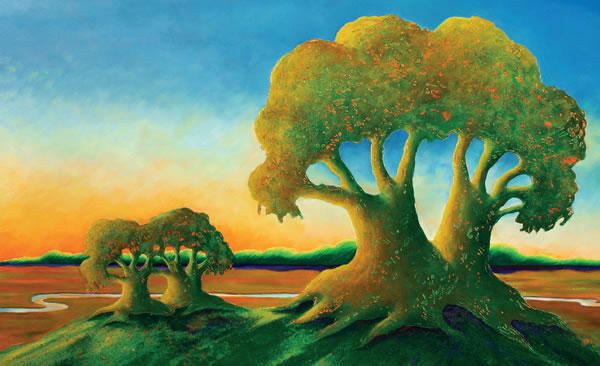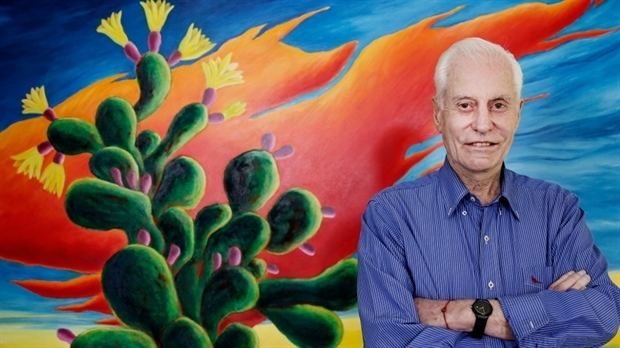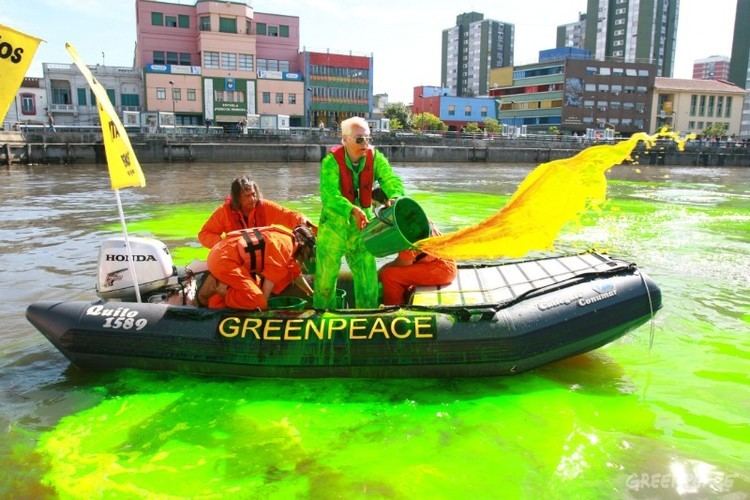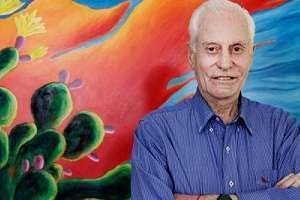Name Nicolas Uriburu | Role Artist | |
 | ||
Education University of Buenos Aires | ||
Biennale arte 2017 nicol s garc a uriburu
Nicolás García Uriburu (December 24, 1937 – June 19, 2016) was an Argentine contemporary artist, landscape architect, and ecologist. His work in land art was aimed at raising consciousness about environmental issues such as water pollution.
Contents
- Biennale arte 2017 nicol s garc a uriburu
- Artistas cap tulo 6 nicol s garc a uriburu
- Life and Work
- Prizes and recognition
- References

Artistas cap tulo 6 nicol s garc a uriburu
Life and Work
Born in Buenos Aires in 1937, García Uriburu began painting at an early age and, in 1954, secured his first exhibition at the local Müller Gallery. He enrolled at the University of Buenos Aires, where he received a degree in architecture, and relocated to Paris with his wife, Blanca Isabel Álvarez de Toledo, in 1965. He would later father a child named "Azul" with Blanca. His Three Graces, a sculpture in the pop art style, earned him a Grand Prize at the National Sculpture Salon in 1968. Venturing into conceptual art, he mounted an acrylic display at the Iris Clert Gallery, creating an artificial garden that set a new direction for García Uriburu's work towards environmental activism.

He was invited to the prestigious Venice Biennale in June 1968, where García Uriburu dyed Venice's Grand Canal using fluorescein, a pigment which turns a bright green when synthesized by microorganisms in the water. Between 1968 and 1970, he repeated the feat in New York's East River, the Seine, in Paris, and at the mouth of Buenos Aires' polluted southside Riachuelo.

A pioneer in what became known as land art, he created a montage in pastel colors over photographs of the scenes in 1970, allowing the unlimited photographic reproduction of the work for the sake of raising awareness of worsening water pollution, worldwide. In addition to environmental conservation he also produced works of art that showcased humanistic naturalism and an antagonism between society and nature, such as: Unión de Latinoamérica por los ríos {Latin America Union for Rivers}, and No a las fronteras políticas {No to Political Borders}.

García Uriburu applied his fluorescein treatment on such diverse waterways as Paris' Lac de Vincennes (1971), the Trocadéro fountains (1972), the Port of Nice (1974) and the Port of Antwerp (1974). He continued to devote his art to the portrayal of endangered species and habitat loss, and was honored with a Grand Prize at the Tokyo Biennale in 1975. In 1981, he used an appearance at the Kassel Documenta 7 exposition to dye the Rhine, and joined German artist Joseph Beuys in planting 7,000 oaks. He and Beuys shared similar views on Humanism, social philosophy, ecology and libertarianism.
García Uriburu returned to Buenos Aires in 1982, following which he planted 50,000 trees. Remaining active in the city's tree-planting effort, he turned to portrait art and in 1993, was invited to the renowned Ruth Benzacar Gallery on Florida Street to present Utopía del Sur (Southern Utopia), a display devoted to his cause.
During the final years while still active in his cause in Argentina, García Uriburu directed tree-planting efforts in neighboring Uruguay and organized protests over the unabated degradation of Buenos Aires' industrial Riachuelo waterway, jointly with Greenpeace. He also taught secondary school students and presided over the Foundation; which bears his name, displays his art and houses an extensive ethnographic museum devoted to Pre-Columbian art.
Prizes and recognition
Uriburu has earned a number of prizes both in his native Argentina and abroad:
